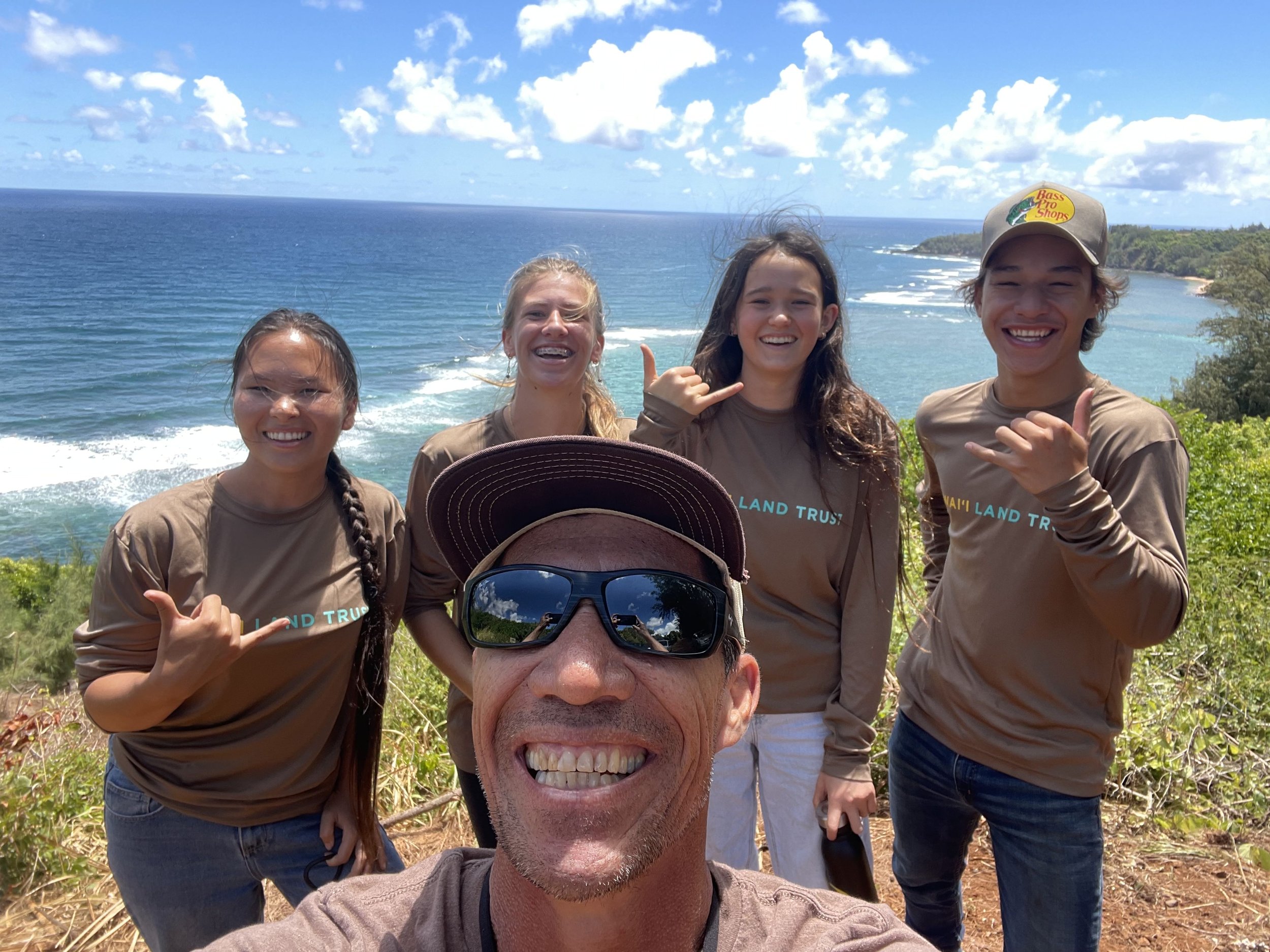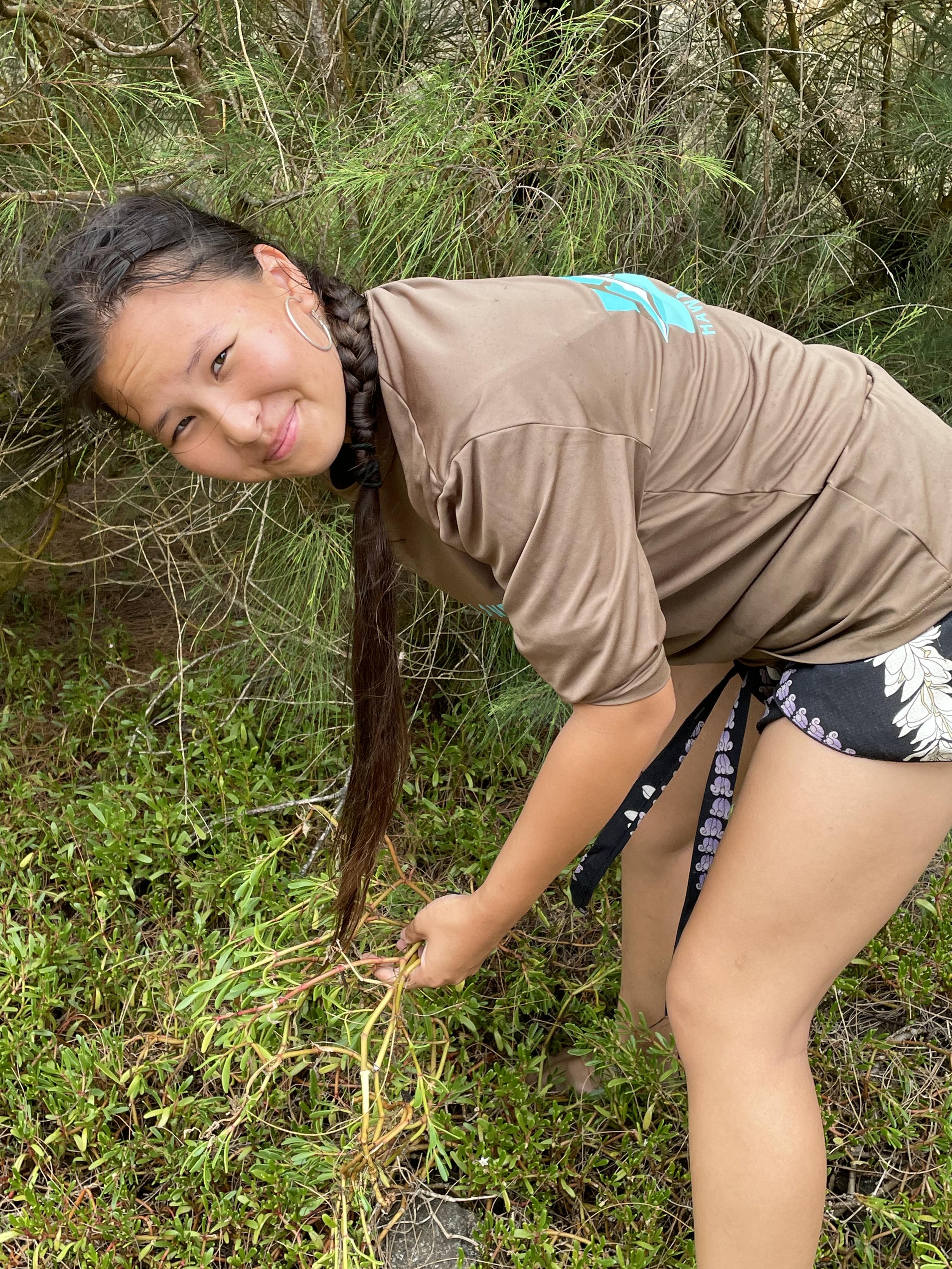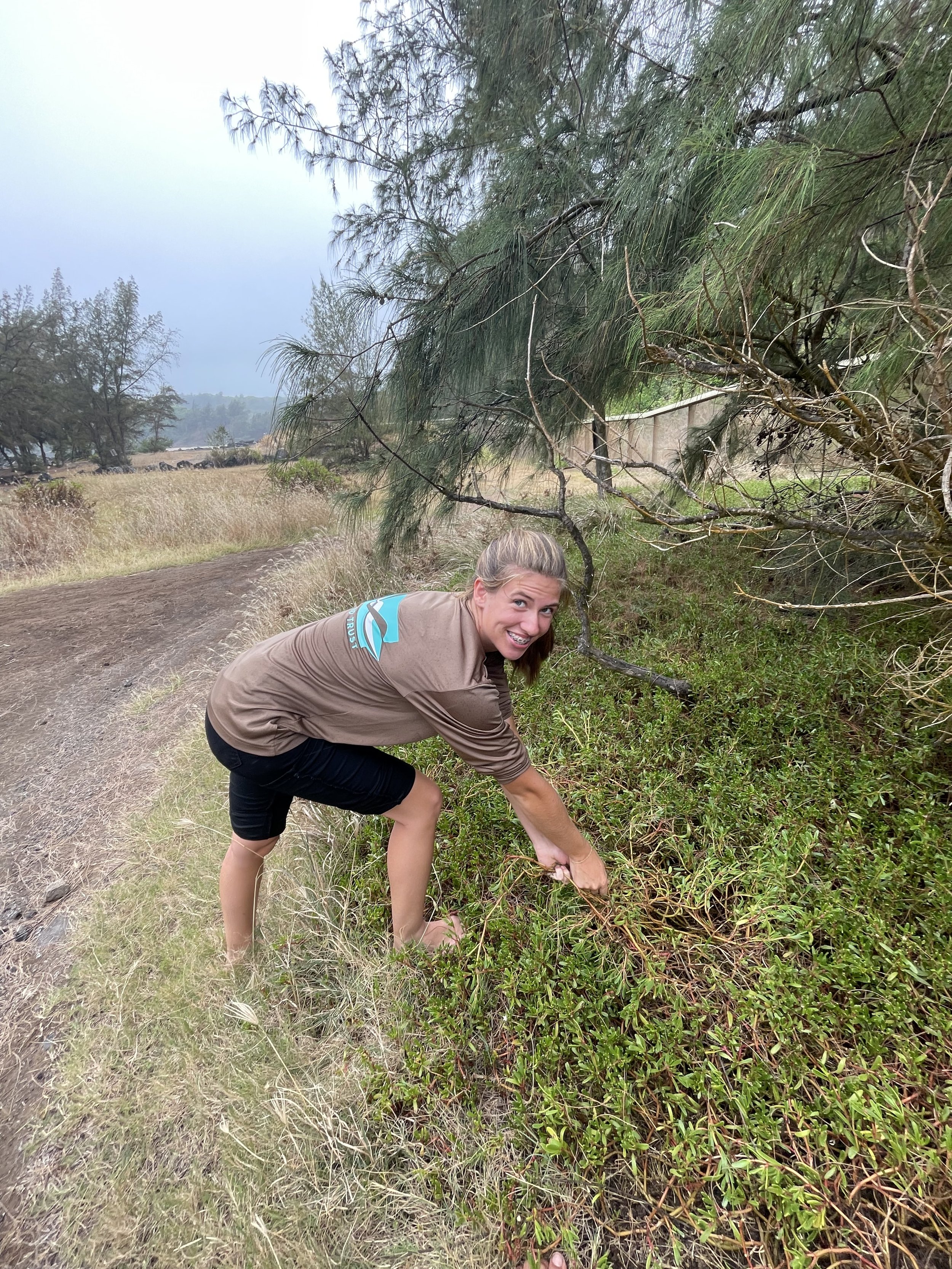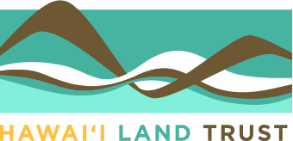Growing Kiaʻi ʻĀina on Kauaʻi
This summer saw the launch of our first internship program on Kauaʻi at Kāhili Beach Preserve. Four teens from Kauaʻi’s north shore joined Kāhili Steward, Kapule Torio, for a four-week paid internship program in which they gained important job skills and in-the-field experience. Here, Kapule shares a reflection from this first summer as well as some thoughts from the interns themselves.
Working with these young adults was a complete joy. Their individual desire to be present and engage in the learning made cultivating their aloha and deepening understanding of our ʻāina effortless. The program aimed to provide an experience within coastal land management and the application of coastal restoration techniques. We learned together as we surveyed many of the plants growing within Kāhili Beach Preserve, and looked into the role that each one plays. As we observed the plants, we also noted other environmental factors such as erosion or tides which guide us in planning and prioritizing restoration work.
Self-care was an important part of the program. Morning observations were combined with individual self-awareness time to connect and ground ourselves to ʻāina and spirit. This practice served the larger purpose of naming of specific work areas. The interns collectively came up with the following names for specific pu’u and kipuka restoration zones: Makaʻala, Kū Mana, Mai Lani, Moʻo I Lalo, and Makani Ola.
The program covered many aspects of coastal restoration, cutting large ironwood and other overgrowth, stump girdling, brush clearing, mulching, organizing community access areas, engaging in visitor inquiries and education, stream edge clearing, and planting. I was amazed at the amount of work the interns achieved during this relatively short program. Mahalo to all the interns, Kaia Dunford, Lilly Shewchuk, Victoria Harris, and volunteer Lauaʻe Torio for sharing their knowledge and mālama ʻāina effort.
Lauaʻe Kamawaelualani Keohokalole Torio:
“When I laid on the pu’u I felt connected with not just the pu’u, but the ʻāina itself. I envisioned roots coming down my back and just thought Kū.”
Kaia Dunford:
“Mālama ʻāina is protecting, preserving, and attentively caring for our lands in recognition of how generously and completely they support us. Mālama ʻāina is about respecting the land and the wisdom of the plants, animals, and people who have inhabited before us so that we can properly maintain these beautiful ecosystems and do our part to help them thrive for years and centuries to come. Challenges facing our restoration work include the impacts of invasive plants, as well as humans and their pets. [At Kahili Beach Preserve] Ironwood is the largest issue, not only taking up space and nutrients, but dropping pine needles that cover the ground which makes much of the area unviable for other plant species. These trees have greatly damaged the native plant communities, which in turn are responsible for stabilizing the area against erosion. In an effort to repair this, we have removed many of the Ironwoods as well as other invasive plants like false kamani, breaking them down mulch for plants.”
Lilly Shewchuk:
“Aloha ʻāina to me is having a continual love for the land. It means coming back to the places you love and caring for and protecting them. Aloha ʻāina means leaving things better than you found them and making our world better for generations to come. Aloha ʻāina is to share the world we have been given and do our best to leave it in the best way possible. Throughout my time with Hawaiʻi Land Trust, I learned more about aloha ʻāina and what that means to me, personally. We learned about native plants and how they affect the ecosystem and how we must maintain a balance in everything we do. While we worked at Kāhili we spent a lot of time cutting Ironwood trees with the hopes that natives would grow in the cleared space. We identified plant species and traveled to surrounding coastlines to find native plants that may do well at the preserve. We out planted native plants that will benefit the land and animals that live there. I learned about the benefits of having land that is sustainable and beneficial for all.”
Victoria Harris:
“Embracing the phrase of malama ʻāina is essential to be living a fully prosperous life alongside our community and environment. We as kaiaulu need to take pride in our kuleana to learn how to co-exist with our ʻāina - that which feeds - tantamount to ʻāina, also implies that we nurture and tend to our lands in order to retain such a privileged life”.








Photos: 1) Kapule selfie with the interns at the Waiakalua trail head; 2) the interns pausing as they clear invasives from the bank of Kīlauea River; 3) Victoria Harris as she plants akulikuli cuttings on the sand dunes; 4) Laua’e posing as he starts his work day; 5) Kaia, Victoria, and Lilly pose after clearing ironwood needles from the dunes; 6) The interns take a break with Jen Waipa from our neighbors at Kilauea Point Wildlife Refuge; 7) Laua’e clearing recently trimmed ironwood branches; 8) Kaia posing near the dunes; and 9) Lilly working in a patch of akulikuli.
